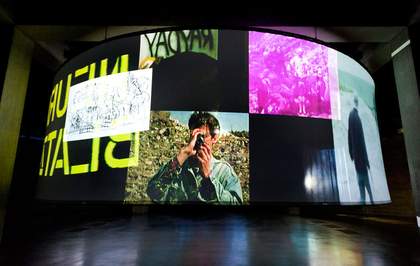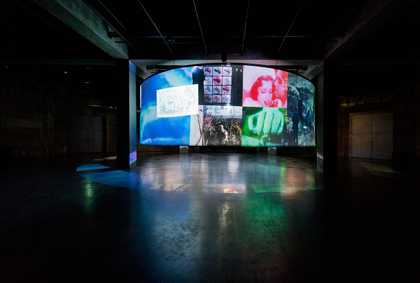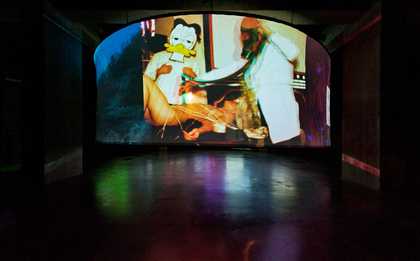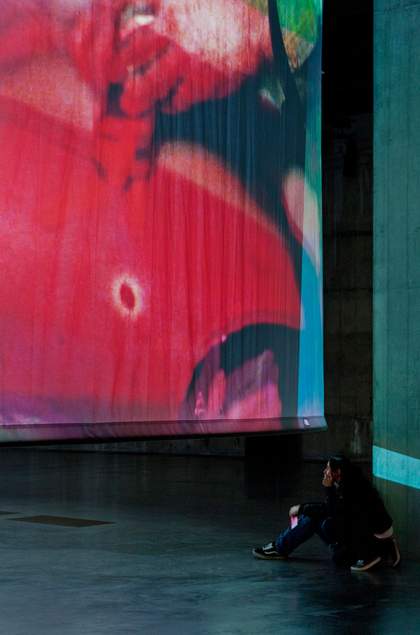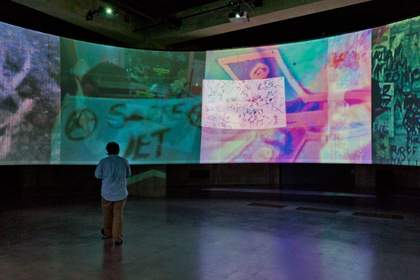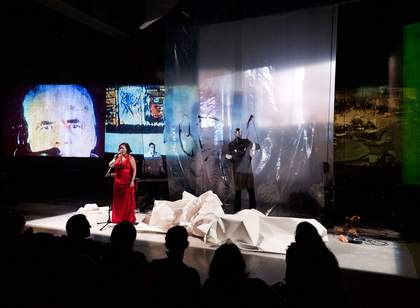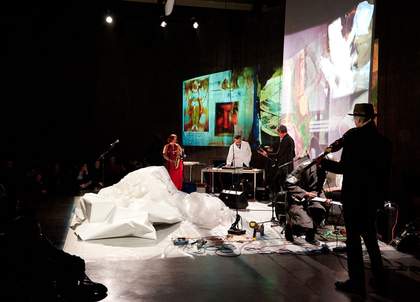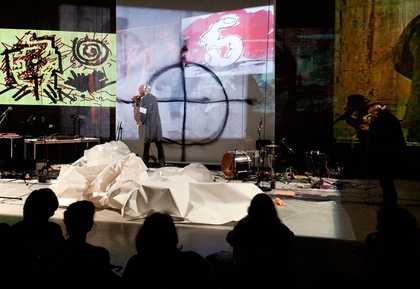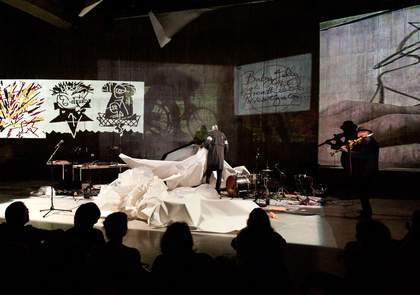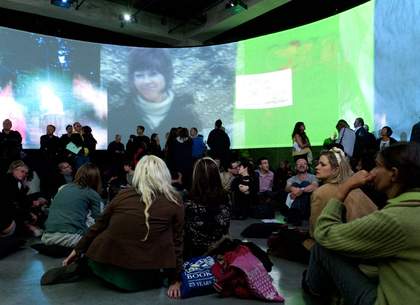Jeff Keen’s Gazapocalypse – Return to the Golden Age was installed in The Tanks at Tate Modern from 18 to 25 September 2012. It formed part of The Tanks: Art in Action programme, a fifteen-week festival from 18 July to 28 October 2012. Curated by Stuart Comer, then the film curator at Tate, it was designed specifically for the unique space of the Tanks and its vast rotunda screen. The installation comprised a number of Keen’s films shown together on a large diorama screen, as well as a performance event. The event took place on 21 September, performed by the artist’s daughter Stella Starr, along with an array of Keen’s other collaborators including Alan Baker, Chris Blackburn, Rob Gawthrop, Michael Paysden as ‘Mike Movie’ and Jason Williams as ‘Silverhead’. Keen died on 12 June the same year, and so the presentation was directed by Starr and dedicated to the artist.
Keen was a pioneer of countercultural experimental film. He used multi-screen projections, collages, animations and live performance moving beyond the cinematic frame to create immersive, kaleidoscopic experiences. The use of the large diorama demonstrated Keen’s interest in expanded cinema and his radical development of multiple screen projection, cut-up soundtracks, and live action as well as early experiments with drawing, painting and animation. Although Keen’s work has a cult following and primarily circulates in the experimental film world, the Tate presentation demonstrated his relationship to an array of twentieth-century art movements. Keen was an avid painter and draughtsman and lifted images from pop culture, war reportage and cinema for his work, which has been compared to that produced by Andy Warhol at The Factory. Alongside these contemporary references Keen was also deeply interested in Surrealism, Dada and the writing of Charles Baudelaire. Keen’s experience in the Second World War also had an important impact on his work, with a number of films incorporating sirens and bombers on their soundtracks.
Keen worked on 8mm and 16mm film allowing his riotous combinations of footage to overlap, or frames to appear within frames. Unsurprisingly, he then began to use multiple screens and to integrate live action and performance, making expanded cinema work. He wrote:
Concerned from the outset with extending film beyond its traditional narrative limits, it seemed a logical step for me to get beyond the frame, and explore the full graphic potential of the medium in the direction of non-linear movement and synthetic vision. Expanded cinema became the social art directed at, and involving the audience, through visual and sound projections, often combined in violently disconnected and overlapping patterns.1
This desire to move beyond the confines of the cinematic frame and ‘involve the audience’ was realised in the Tanks. The use of the vast diorama also meant that multiple films by Keen could be screened at once in a panoramic presentation. The action of the performance on 21 September mirrored that in the films. The performance created an illusion of playful and makeshift mayhem with live music played from synthesisers, sheets of fabric spray painted and a fire cracker lit off. The props often paralleled those in the films, as did the costumes, which comprised a common uniform of shirts, lab coats, masks and army surplus jackets. In the performance Keen’s visual vocabulary appeared to leap off the screen and converge in a sensory experience for the viewer. By surrounding and subsuming the audience – either through the dioramic projection, the introduction of a live action piece or the combination of both – they became part of the work.
Philomena Epps
June 2015

